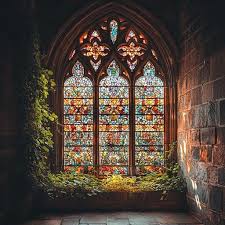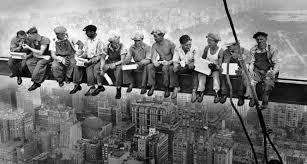
Few photographers have left as indelible a mark on the world of photojournalism as Robert Capa. Known for his fearless approach to conflict zones and his ability to convey the raw emotion of war, Capa captured some of the most iconic images of the 20th century. His legacy goes beyond the battlefield—Capa’s work is a testament to the human spirit, resilience, and the complexities of war that affect both soldiers and civilians.
Early Life and the Making of a War Photographer
Born Endre Friedmann in Budapest, Hungary, in 1913, Robert Capa grew up in a tumultuous political climate that would later fuel his passion for documenting history in the making. Fleeing Hungary for Berlin in the early 1930s due to rising political tensions, he initially studied journalism but quickly gravitated toward photography. When Adolf Hitler rose to power, Capa, being Jewish, was forced to leave Germany for Paris, where he developed his photographic skills and adopted the name “Robert Capa” to appear more marketable to European publications.
In the mid-1930s, Capa took a giant leap toward becoming the legendary war photographer we know today. He covered the Spanish Civil War from the front lines, capturing some of his most enduring and controversial images, including the famous “Falling Soldier” photograph. This image, which depicts a Republican soldier at the moment of death, became a symbol of the brutal realities of war. The authenticity of the photo has long been debated, but its emotional impact remains undeniable.
War Through Capa’s Lens: Iconic Conflicts and Images
Capa’s career was built on documenting some of the most significant conflicts of the 20th century. From the Spanish Civil War to World War II, from the Israeli War of Independence to the First Indochina War, his images are a haunting testament to the cost of conflict.
1. World War II and D-Day
Arguably, Capa’s most famous work comes from his coverage of World War II, where he risked his life numerous times to bring the war’s brutality into the public eye. His series of photos from the Normandy landings on June 6, 1944, during D-Day, remain some of the most iconic war images ever captured. The grainy, blurred quality of the photos is a result of the harsh conditions under which they were taken. While only a few of the images survived due to a darkroom mishap, the remaining photos have become legendary, encapsulating the chaos, fear, and heroism of the soldiers storming the beach.
2. Spanish Civil War
Capa’s work during the Spanish Civil War helped to solidify his reputation as a war photographer with a deep humanistic touch. Unlike many war photographers, Capa wasn’t just interested in documenting military events—he was drawn to the everyday people affected by conflict. His portraits of Spanish civilians, refugees, and resistance fighters offer a sobering look at the toll war takes on communities.
3. The Israeli War of Independence
In 1948, Capa traveled to the newly established state of Israel to cover the Israeli War of Independence. His images from this period provide a rare glimpse into the birth of a nation amidst the chaos of war. His photos captured not just soldiers, but ordinary people trying to build lives in the midst of turmoil, emphasizing his ongoing interest in the human element of conflict.
The Magnum Legacy
In 1947, Capa co-founded Magnum Photos, one of the most influential photography cooperatives in history, alongside Henri Cartier-Bresson, David “Chim” Seymour, and George Rodger. Magnum was born out of a desire to give photographers more control over their work and its distribution—a revolutionary concept at the time. The cooperative allowed its members to maintain the rights to their images, ensuring both creative freedom and financial autonomy. Magnum became synonymous with world-class photojournalism, and its influence continues to this day.
Through Magnum, Capa helped to elevate war photography to an art form, pushing the boundaries of what photojournalism could achieve. He encouraged young photographers to approach conflict zones with both courage and empathy, emphasizing the importance of capturing not just the violence of war, but the stories of those caught in its wake.
Capa’s Unique Approach: “If Your Pictures Aren’t Good Enough, You’re Not Close Enough”
Robert Capa’s approach to photography can be summed up in his famous quote, “If your pictures aren’t good enough, you’re not close enough.” Capa’s fearlessness in getting close to the action gave his photographs an immediacy and intimacy that few war photographers have matched. His photos are not distant, detached observations; they place the viewer right in the midst of the chaos, feeling the tension and danger as though they were standing alongside him.
This closeness wasn’t just physical. Capa had an extraordinary ability to connect with his subjects, whether they were soldiers, civilians, or refugees. His portraits convey deep empathy, showing the personal, human cost of war rather than just its tactical or strategic aspects.
Tragic End and Enduring Influence
Capa’s relentless pursuit of the story would ultimately cost him his life. In 1954, while covering the First Indochina War, Capa stepped on a landmine and was killed instantly. He was only 40 years old. Despite his early death, his influence on photography and photojournalism remains profound. Capa’s work inspired generations of photographers to document conflict zones with a focus on humanizing the individuals caught in war, rather than just portraying them as faceless casualties.
Conclusion: The Legacy of Robert Capa
Robert Capa was more than just a war photographer—he was a visual storyteller who sought to capture the human side of conflict. His images remain as powerful today as when they were first taken, not only for their historical significance but for their emotional depth and raw authenticity. Capa’s fearless dedication to his craft, his co-founding of Magnum Photos, and his iconic images from some of the 20th century’s most pivotal conflicts have left an indelible mark on both the art and design worlds.
His work is a reminder that photography is not just about documenting events but about capturing the human experience, even in the darkest moments. As wars and conflicts continue across the globe, Capa’s legacy endures, inspiring photographers to look beyond the violence and find the humanity within.
Thanks for reading.


